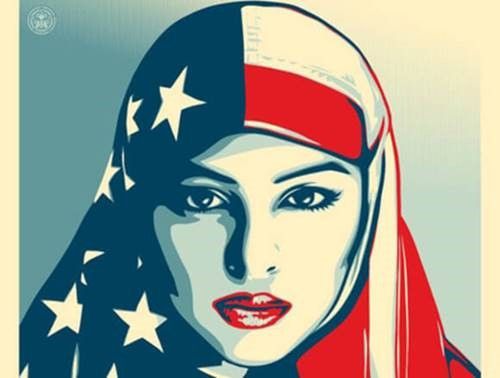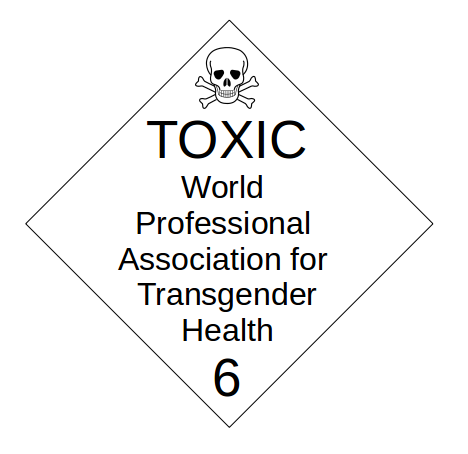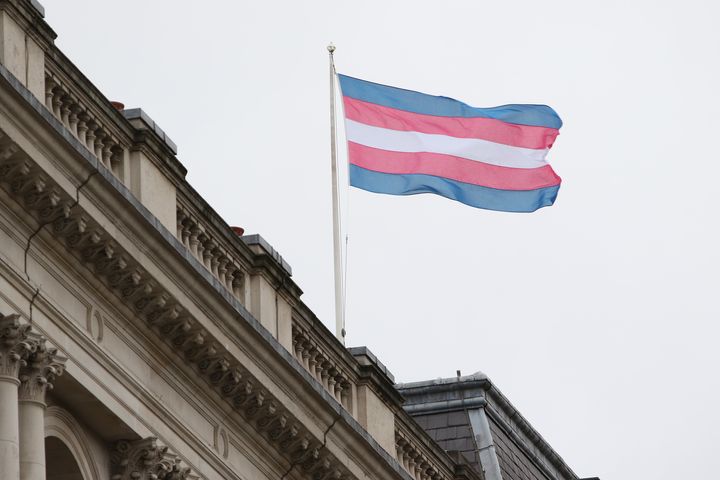Have Ilhan Omar or Linda Sarsour Voluntarily Removed Their Hijab in Solidarity with Iranian Women?
Sarsour and Omar have continued to glorify their wearing of hijab as a protest against white racism and alleged "Islamophobia."

I first visited Teheran in 1961, on my way to Kabul. The circles in which I moved were upper middle class and the women were dressed in glamorous, expensive, European clothing. I was shocked by the wretchedness of the poor and by how horrendously the servants were treated. I loved the bazaars, the tile-work, the courtyards, the distant mountains, and the food.
I barely survived Kabul, I got out, returned to finish my last semester of college—but the East had inevitably claimed me. I ordered pilau with carrots and raisins, kebabs, puddings with rose petals, began reading Memoirs written by Central Asians and Arabs, and started writing about my own experiences in journals and articles. I joined the civil rights and anti-war movements but then, far more fatefully, I joined the American feminist uprising in 1967.
By the early 1970s, Kate Millett had introduced me to Reza Baraheni, who was the head of CAIFI (the students against the Shah). He described how the SAVAK tortured him. When Khomeini took over, Reza rushed home, believing that this would be a new day for his country. He invited Kate to address Iranian women on International Women’s Day—so far so good—but then Khomeini arrested her. How could we, a group of American feminists free her? We had no feminist air-force, no feminist country. Oddly enough, Khomeini let her go—and she wrote a very fine book about her experience there: Going to Teheran.
The following year, Reza invited me to deliver a lecture on International Women’s Day. He said that I “understood the Muslim soul.” I laughed—but I declined. I said that I would not come, not even if I were accompanied by a large contingent of Marines. In a few years, Reza had fled the country too.
In 2004, I joined a panel of Iranian and Afghan women at the UN. A group of eight formidably black-clad Iranian women came in, sat down in a bloc, glowered, and took notes. The brave moderator stood up and said: “We know who you are. Go home and tell your bosses that one day women will bring them down.”
The flowing black garments said nothing but at a signal from their leader, they slipped out as one.
Later in the 21st century, I participated in an American Senate briefing on Iran which was beamed up into Iran and Kurdistan. Our words were simultaneously translated into Farsi and Kurdish. It was a thrilling and memorable occasion. The room was crowded with Iranian dissidents in exile. (Forgive me, I cannot seem to find my speech or the piece that I wrote about it).
Thus, Muslim women everywhere, but especially in Afghanistan, Pakistan, and Iran have been on my mind and in my heart for a long, long time.
As we know, American and European feminism has been hijacked by the gender identity and transgender movements; anti-racism has trumped anti-sexism; condemnations of imperialism, colonialism, and slavery have been seen as a Western-only crime and have not been viewed as global phenomena.
Radical feminist analyses and clear and passionate writing has been disappeared, or at best, neutralized, or written in an incomprehensible, post-modern, and Mandarin language that remains purposely impenetrable.
America’s so-called Women’s March was an abomination and a travesty. It was not only anti-feminist. It was also anti-America, antisemitic, anti-Israel, and anti-Western. It was more about opposing Trump than opposing sexism. However, in retrospect, one must admit that the judges Trump appointed to the Supreme Court and to the federal judiciary were unbelievably, diabolically anti-woman on so many issues… Read Margaret Talbot’s profile of Samuel Alito in The New Yorker.
But mainly, the marchers glorified the wearing of hijab. Some marchers sported embarrassing pink “pussy” hats but many others desecrated the American flag by fashioning it into a hijab. The poster that memorialized this desecration became very popular.

I am remembering this shameful march as I watch and read about the heartbreakingly brave Iranian women who have been protesting for 11 days and nights in the streets of at least 80 cities. They are risking death for the right not to wear hijab. Women have been burning their hijabs (headscarves) and cutting their hair. They've been heard chanting "Women, Life and Freedom," "Death to the dictator,” “Death to Khamenei,” “Reza Shah rest in peace,” and “Khamenei get out of our country.”
The Iranian mullahs have unleashed the Revolutionary Guard and paramilitary (Basij) forces against them. They have been dragging women by their hair, banging their heads on the ground, tear-gassing, beating, shooting, arresting, and murdering them. Fatality estimates range from 50-400 protesters and bystanders.
These protests were sparked by the Sept. 16th death-in-morality-police-custody of Mahsa Amini, a 22-year-old Kurdish Iranian woman. She was apprehended while in a car with her family because she was, allegedly, wearing her hijab incorrectly. While the morality police denied beating or torturing her to death, a photo of Amini in a hospital bed reveals her bloodied face. She was in a coma.
Pro-government demonstrators also have been out in force, defaming the women and their male supporters as "Israel's soldiers," and shouting "Death to Israel," and "Death to America." The government has blacked out the internet and arrested journalists.
It is obscene that the hijab-wearing Palestinian-American activist Linda Sarsour; U.S. Rep Somali-American Ilhan Omar; and non-hijab wearing Palestinian-American Rashia Tlaib have not actively and loudly supported these brave Iranian women.
Their pal, AOC (Alexandria Ocasio-Cortez), who is neither a hijab-wearer nor a Muslim, did post a statement. AOC wrote:
“Solidarity with the courageous women and allies in Iran protesting for their freedom. Mahsa Amini was senselessly murdered by the same patriarchal and autocratic forces repressing women the world over. The right to choose belongs to us all, from hijabs to reproductive care.”
Ah, not so fast. While American women are in serious trouble, (oh let me count the ways), we are simply not in the same kind of trouble that Iranian women face. And I object to exploiting them for our own purposes—especially since we are not able to do much to actually help them. My colleague, Shoshana Bryen, a Middle East and Foreign Policy expert, points out that, according to AOC:
“The problem is NOT the mullahs, NOT the religious regime, NOT the totalitarian rule. The problem is PATRIARCHY—and the US has one too. Therefore, we are just as bad as the mullahs. ‘The right to choose…’ as if Mahsa Amini had any rights at all.”
Sarsour and Omar have continued to glorify their wearing of hijab as a protest against white racism and alleged "Islamophobia."
When will this trio, (Sarsour, Ilhan, Tlaib), condemn the mad mullahs and their murderous morality police? These Twitter queens are rarely shy about sharing their views on the big news stories. But thus far, two of them have only managed to retweet someone else's words. Tlaib, a non-hijab wearer, did tweet one statement of support for the Iranian women. She wrote:
“I stand in solidarity with the #IranProtests as they fight for a woman’s right to bodily autonomy and against police brutality in the wake of the horrifying murder of #Mahsa Amini.”
Well said. But interestingly, Tlaib did not post this on her twitter account which has 1.4 million followers; her statement appears at the account which has 507K followers. A curious choice, a strange muting of her voice.
Tlaib retweeted a "solidarity" statement from U.S. Rep. Alexandria Ocasio-Cortez, who wrote that "the right to choose belongs to us all, from hijabs to reproductive care." Sarsour retweeted another statement against "forced hijab" by a lawyer, Azadeh Shahshahani. Omar retweeted "To be (hijabi) or not (hijabi) is the business of no state or man" by Yasmin Abdel-Magied.
Why can't Sarsour, Omar, and Tlaib speak passionately in their own voices at a press conference? Or in Congress? Why have they not addressed the demonstrations which have been taking place in DC, London, and elsewhere? According to Iranian dissident and author, Manda Ervin, “the gathering in DC on 9/24 was huge. Reza Pahlavi and his daughter were there and chanting with us. Iranian refugees all over Europe have also been demonstrating.”
When will these particular Muslim women activists and legislators, all professional defenders of Muslims, decide that Muslim women are also worthy of defending? When will they hold Muslim men – who are misusing or using the Quran to terrify and subordinate Muslim women – accountable?
As I argued in 2010, the burqa and niqab condemn women to an ambulatory sensory deprivation chamber, and violate a woman's right to health, safety, freedom, and dignity. The Islamic Veil is also a statement of Islamist power and control over women's bodies and lives. Afghan, Saudi Arabian, Egyptian, and to some extent, Iranian women have also been deprived of sunlight, visual acuity, and any and all spontaneous social lives in the public square.
“In interviews and in memoirs, one learns that face and body veiling also induces anxiety and claustrophobia.”
When I was in Afghanistan, I saw women sweat, stumble, trip, and sometimes fall. If they were not super-wealthy, they were often juggling babies and shopping bags under their flowing and dust-grimed garments. In interviews and in memoirs, one learns that face and body veiling also induces anxiety and claustrophobia. Many women have trouble breathing.
Twelve years ago, I did not argue for banning the hijab, a head covering. It does not obscure one's identity, although, in the West, it can still set one apart from others depending on how large, dark, unfriendly, or "forbidding" the hijab is.
However, in Mahsa Amini's honor, I am rethinking that position. As long as one woman anywhere can be harassed, beaten, arrested, or murdered because her hijab has slipped or is seen as improperly worn – Western women, including highly visible activists and politicians like Sarsour and Omar, should consider voluntarily ditching their hijabs. When all women are free to wear or not to wear an Islamic head-covering – then, and only then, might women choose what is right for them.
Asra Nomani, the Muslim feminist, activist, and author, has just published an incredible challenge to the pro-hijabi mullahs. Translating from the Quran’s Arabic, she shows us that “hijab” does not refer to a head covering for women; rather, it refers to a barrier, a spatial divider, a separation, a gate—which can be made of material or of harder stuff, but one that is physical, spatial, architectural.
Brava Asra for using the Master’s tools to dismantle the injustice being done in the name of holiness.
Clearly, the Iranian women and their male supporters find their lives intolerable. They'd rather be dead than continue to live in the prison that Iran has become for all but the ruling mullahs and their hirelings. According to Shadi Sadr, an important human rights lawyer, "They have nothing to lose. They are standing up and saying 'Enough of this. I am willing to die to have a life worth living.'"
The demonstrations, however, are about more than women's rights. Iranians have demonstrated in massive numbers before. In 2009 over election fraud, in 2017 over economic misery, and in 2019 over fuel prices. Each time the government suppressed the uprisings with bullets, tear gas, beatings, arrests, torture, and murder. What might be required for a different outcome to occur?
In a personal interview, my esteemed colleague, Ibn Warraq, points out: "The protesters lack leadership and above all they lack weapons."
Ibn Warraq also points out that "At some point the army would have to flip, refuse to kill their own people."
Is this possible? Can it ever happen?
Are a people who were able to drive out the Shah also capable of driving out Khomeini's mullahs? That is the question.
Is this Iran’s “George Floyd” moment—or is the murder of women so commonplace that one woman’s death may not have the power to spark a wave of dissent that does not quit until it obtains its goals?
Ayaan Hirsi Ali has viewed the Iranian hijab protests as something new because male protestors are supporting women in the matter of women’s freedom. An Iranian informant whom I cannot name insists that there are organized revolutionary “cells” all over Iran who have waited for just such a spark. American women have been bravely and persistently demonstrating for abortion rights—and the Iranian women protestors are risking beatings, arrests, and even death. Are feminists at the ready and on the move globally? I am simply not sure.
4W provides a platform for over 70 feminist writers in countries spanning the globe. This work is made possible thanks to our paid monthly subscribers. Join today to support our work!
Enter your email below to sign in or become a 4W member and join the conversation.
(Already did this? Try refreshing the page!)




Comments